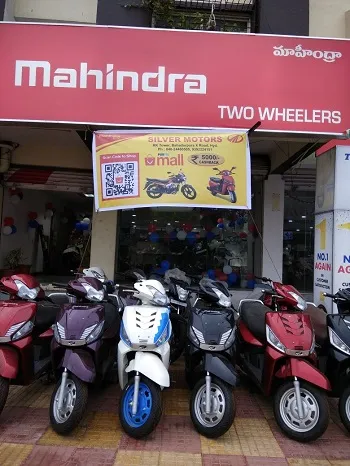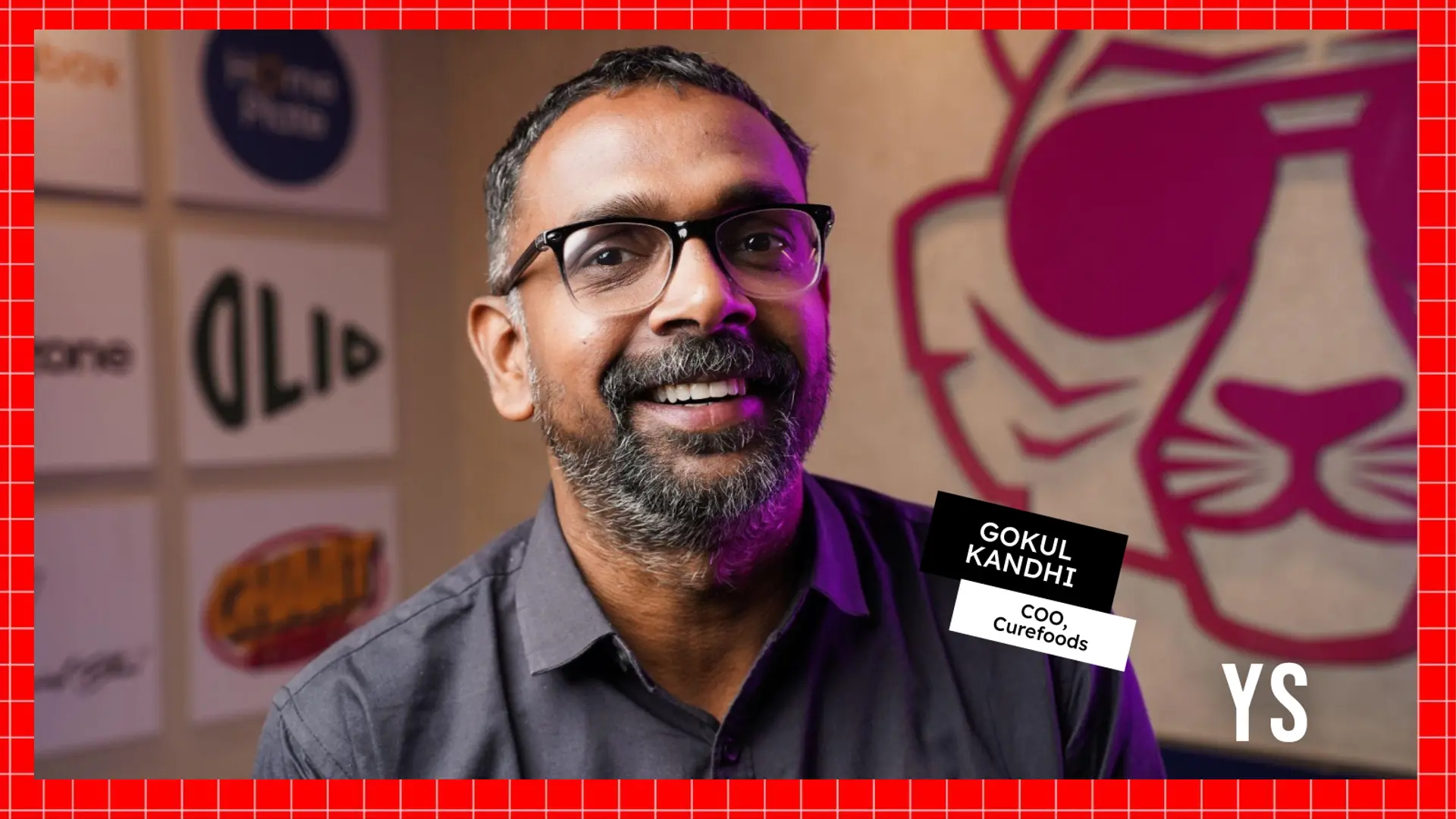Small towns become the next frontier for tech domination in India. Paytm Mall leading the pack?
Amit Sinha, the man at the helm of Paytm Mall, knows a thing or two about India’s small towns. You know this when he recounts how he didn’t get to hold a Coca Cola bottle until he was in high school. The stores in the town he lived in — Panchet in Jharkhand’s Dhanbad district — just didn’t stock the cool drink.
“I know how access can be a challenge. My father was with a PSU and money wasn’t the issue; we could afford to buy things. I loved the life (living in a small town) but you had to travel to the nearest big town to get anything,” says Amit.

Paytm’s Founder Vijay Shekhar Sharma was also raised in a small town — Aligarh. This partly explains the company’s focus on small towns. The team, almost viscerally, understands the aspirations of those who live in India’s smaller towns.
There is the economics of it too. The 2011 Census found that India had 7,935 towns. India’s small towns, semi-urban areas, and villages are still home to a majority of the country’s population. It is a myth that there is no wealth or buying power in these locations. In fact, Kotak’s Wealth Report states that emerging cities and small towns account for 45 percent of India’s Ultra HNI population.
But to access this market, Amit says, the pureplay online model will not work. As YourStory reported on February 12, Amit claims Paytm Mall has hit Gross Merchandise Value (GMV) run rate of $3 billion this fiscal, and has cornered 15 percent of the online retail market. He says non-top cities contributed from 65 percent to 70 percent of this GMV. Amit attributes this rapid growth in a short period of time — Paytm Mall launched a year ago — to the company’s offline-to-online (O2O) strategy. Up to 65 percent of its sales are through offline-to-online with the rest being purely online. The company says it has a reach of over 700 cities and towns thanks to its partner stores.
Physical presence in the digital age
While many industry watchers felt Paytm lost out by entering the ecommerce game only last year, this is turning out to be a blessing for the company. Market leaders Flipkart and Amazon have spent big money on building a purely online play, only to now find that small town India, even in the digital era, still prefers offline to online. They are now attempting various experiments to capture the mind, and the wallet share, of small town shoppers.
Flipkart’s no-cost EMI that is available even for shoppers who do not have credit cards, and Amazon’s Project Udaan under which the company has partnered with small stores (through partners like StoreKing and Vakrangee) in rural India whose shopkeepers help customers buy on Amazon, are just some of the initiatives. Paytm Mall, on the other hand, knew it had to use offline retailers to power its growth right from the start.
Vertical ecommerce companies, like Lenskart, Firstcry, Pepperfry, and Caratlane, started offline stores more than four years ago when they realised a physical presence is essential in India. Lenskart, for instance, operates 400 brick-and-mortar stores in over 80 cities. Online retail is still just a fraction of the overall industry. Retail in India is projected to grow to $950 billion this year, while ecommerce is expected to reach $28.5 billion in size.
TataCLIQ, the Tata Group's ecommerce arm, has been a pioneer of the true omnichannel model in India. It calls its O2O strategy phygital retail and has brought about 1,000 stores and 50 partner brands online. However, its seller base is restricted to its own network of stores. In Paytm Mall's case, there is no restriction on the brands or the stores it can bring online.
It is not just the primarily online players who are looking at small-town India to power growth. Modern physical retail is also eyeing this market. Especially Kishore Biyani's Future Group. Its flagship Big Bazaar stores are present in 130 cities across 26 states, including in smaller cities like Hajipur in Bihar and Raigarh in Chattisgarh. It also runs around 800 small format neighbourhood stores. The company is planning to increase this count to 10,000 by 2022, and much of this growth will be in small towns.
Kishore Biyani, who is taking modern trade to Bharat, says the small town shopper is different from the metro one. "The number of SKUs he buys is lower. The small town shopper is limited by price, aspirations and, to a certain extent, by income," says Kishore. This is one of the reasons the Future Group is opting to open small-format stores where only a limited number of SKUs are kept.
Online retailers have made some inroads into this market. Online shoppers in Tier II and smaller towns grew threefold compared with metro shoppers, and accounted for nearly 41 percent of the overall online shoppers in 2017, according to advisory firm RedSeer Consulting. Yet physical is still king here.
As Ujjwal Chaudhry, Engagement Manager at RedSeer, says, while small towns have a huge smartphone user base, not all of them are shopping online as there is still mistrust of the online mode of shopping. Having a physical presence helps improve trust as there is a feeling that a brick-and-mortar store is more enduring than a virtual one.
Forrester Research's Forecast Analyst Satish Meena too says online companies will have to go offline to capture the small town market, especially in categories like fashion. Touch and feel is still key in categories beyond mobile phones.
Importantly, small towns of India do not have many avenues of entertainment and 'going shopping' becomes an event. "People have a lot of time in small towns. That's why they go to brick and mortar stores. They will try online shopping, but will they only shop online--that's the question," says Kishore.
It is for this reason that even in markets like China, where online retail has picked up significantly, omnichannel or O2O has been the way to go. O2O sales in China are projected to reach $143.6 billion in size in 2019. This charge has been led by Alibaba, whose founder Jack Ma has famously explained his concept of 'New Retail' as “the integration of online, offline, logistics and data across a single value chain". Alibaba introduced Hema supermarkets and has invested in a slew of offline retail companies. It has already invested over $8 billion in physical retail.
It is not a coincidence that Alibaba is one of the largest investors in Paytm Mall.
Paytm Mall is running a series of experiments that it believes will help it cross $10 billion GMV next fiscal. The experiments they are running are meant to create a deeper integration between physical stores and online retail--something that has not been done in India so far. The vertical ecommerce players have used offline stores to expand reach and maybe act as delivery points. Nothing much has been done beyond that. What Paytm Mall is attempting to do is to lure more shoppers to offline stores through online offers, give more product options to a consumer within the store than the actual inventory available in store and use online-like technology tools in store to make the shopping experience richer.
Paytm Mall's O2O push
Beyond mobiles, there is a huge space that has not yet been solved by ecommerce. Everything else in the $1.1 trillion commerce market is open (for disruption). This is what we are targeting versus a $25 billion-$35 billion market that online retail is projected to grow to,” says Amit, Paytm Mall’s Chief Operating Officer, with whom YourStory had detailed interactions in person and on the phone for this story.
Paytm Mall’s strategy is quite simple on paper — it primarily brings offline stores online, offering them technological and logistics support.
In the Paytm Mall model, a customer could order online or offline. If a customer is ordering online, they can opt for home delivery, or pick up at a store. If a customer is in the store, they can scan the Paytm Mall QR code within the store and avail additional offers, discounts, and cashbacks. If a product is not available in the store, the product gets picked up from the warehouse. This warehouse could be operated by Paytm Mall (the shopkeepers pay a fee), the distributors, or the brand. Paytm Mall's tech maps the retailers to their offline distribution channel so the product is picked up through the traditional channel.
When we started, we were evangelising O2O; now we can talk about how it is turning out,” says Amit.
“We were always convinced that O2O is the way to go for a country like India...There are 15 million retailers in this country. Even after many years of organised retail, it is still not dominant. Our belief is if we combine our scale and our ability to build great technology with the value that 15 million shopkeepers in this country are bringing to consumers, we can give a beautiful and a different experience to the consumer. We started with this belief, and today we can say confidently that this is the way to go,” explains Amit, when YourStory met him in Paytm Mall’s newly set up Bengaluru office, which happens to be Flipkart’s first corporate office. Flipkart moved out of this building in Bengaluru’s startup hub of Koramangala, in 2015. Paytm, in turn, moved into this space in January.
The O2O model makes business sense for two reasons:
- The product delivery time plays an important role in determining a customer’s experience with a platform. The etail leaders, Flipkart and Amazon, have invested heavily into setting up and expanding in-house logistics arms. However, while they are able to offer fast deliveries in top cities, delivery time can go up to a week or more in smaller towns. Amit says that with their O2O strategy, the company can ensure same day and next day delivery even in small towns. “Same day and next day deliveries can only be done through local fulfillment. Can you open 400-500 warehouses to do that? Here I have 15 million potential fulfillment points (the network of small retailers in the country). We have to just give them enough tools,” says Amit.
- Brands have also taken to this model well, claims Amit. He gives the example of Samsung, which has about 1.5 lakh stores in the country. Over 25,000 of these stores are already on Paytm Mall. Amit says brands love this model primarily because the offline retailers see Paytm Mall as a value add and not as competition. A store stocks only a fraction of a brand’s inventory. Amit claims brands, depending on category, witness up to 50 percent loss of sales after a customer decides on a product because the right size or preferred colour is not available then. With Paytm Mall, the store can get the preferred product from the warehouse and deliver it to the customer’s home preventing a loss of sale. Amit claims that stores see up to 40 percent increase in sales once they are aboard Paytm Mall.
Also Read: Small-town wallets power growth of ecommerce in India
A tale of experiments and use cases

When Paytm, the wallet, was scaling up there was an ‘aha’ moment, recalls Amit. This was when a Bengalurean had written in saying an auto driver accepted the fare via Paytm as he had no change. That is how peer-to-peer transactions started on Paytm and this is among the largest use cases of the wallet.
Amit believes a similar critical mass of use cases is building up in the Paytm Mall ecosystem via the QR code technology that is central to the business.
During Diwali and Puja, the Khadim’s store in Kolkata's Park Street sees over a lakh footfalls a day and people queue up to get into the footwear store. During the festival season a few months ago, Khadim’s put up blown up versions of the store’s Paytm Mall QR code on the shamiana doors and on the name card danglers of salespeople. Customers queuing up were asked to scan the QR code and order the product through the app. Whereas in the store, there was a separate queue for Paytm Mall shoppers. They had to just try on the product and walk out as the payment had also been made through the app.
"With Paytm Mall, our customers enjoy the feel of online shopping in an offline environment. They get to touch the samples, see product videos, read specifications by scanning the QR Code and also seamlessly buy products through the Paytm Mall app without having to stand in long queues for the same,” says Tapas Ghosh, General Manager- Sales and Business Development, Khadim's.
He adds that the brand will extend the partnership with Paytm Mall to 10 to 20 more such stores in the next few months.
Others have used the QR code to track marketing effectiveness. A store in Maharashtra’s Sangli had put up a hoarding in the busiest junction with the store’s Paytm Mall QR code prominently displayed. This way, the store was able to track walk-ins based on the hoarding as there was a voucher linked to that code. Amit shares that a number of brands are incorporating the Paytm Mall QR code in their newspaper ads.
This helps Paytm Mall as it acts as ads for the site too. This is one of the reasons why the company’s cash burn is lower. Amit claims that while Flipkart's and Amazon's cash burn hovers in the 15 percent to 20 percent of GMV range, Paytm Mall's is under 10 percent at the EBITDA level. Most of the cashback offers are part funded by brands and by the stores.
Now that Paytm Mall has seen initial success with its O2O model, it is embarking upon a series of experiments. Its partnership with footwear brand Red Tape may be the biggest of the lot. All products in around 50 Red Tape stores in cities such as Delhi, Kolkata and Kanpur are being equipped with their own QR codes. On the day of launch, the Delhi store saw around 380 transactions.
Customer can have actual shopping experience by selection, touch and feel of products with online prices. We are the first ones to start this new concept in India and are getting tremendous customer response,” says Shuja Mirza, President - Red Tape.
The plan is to scale this up to 100 stores by year-end. Paytm Mall is targeting business worth Rs 500 crore from the Red Tape stores.

The company is in talks with brands in categories such as footwear, appliances and fashion to replicate the Red Tape model. More such launches are planned for the next quarter.
The company is also in talks with brands to set up pop-up experience zones. There is also a plan to work with appliance brands to open smaller store spaces as the products will be delivered from warehouses through Paytm Mall.
Much of the focus will be on categories such as mobile, appliances, laptops and footwear, as products are standardised and typically come with barcodes, making them easier to digitise.
Paytm Mall is scaling up integrations with other Alibaba investees —Xpressbees and BigBasket. It has been working with intra-city courier service providers to ensure rapid deliveries. Xpressbees is enabling this for Paytm Mall.
The site’s customers will be able to buy fresh produce through BigBasket’s store on Paytm Mall in the next three to five months. Paytm Mall will also use BigBasket’s in-house delivery network to start delivering other products.
But Amit says the growth driver will be small towns. Will that happen? Will scanning QR codes and making digital payments for purchases become a habit for the small town shopper?
We go back to Kishore Biyani and his Future Group. He says they offer WhatsApp based shopping, where people place orders on WhatsApp and get the goods home delivered, in his small format stores in smaller towns. While people have opted for it, customers still prefer to walk in and buy.
"Everybody (all retailers, including online ones) will try out everything. There will be a lot of experimentation. Ultimately the customer will decide," says Kishore.
While early indicators make it clear that these shoppers have an appetite for online retail, Indian consumers have repeatedly shown that their habits cannot be predicted and that they are not the most loyal of customers. A better offer can take them away. This will be Paytm Mall's biggest challenge as it is for all other e-tailers.







